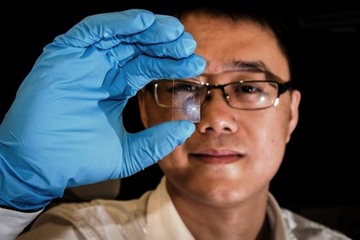Its been a big asset for photographers for a long time but it is time to leave the flash device in the museum. A new image sensor could make it possible for the photographers to take Clear, sharp photos even on dim lighting.
The new sensor, created by a team of researchers at Nanyang Technological University (NTU), is highly sensitive to both visible and infrared light which means it could be used from family nikon to surveillance and satellite cameras.
This sensor which is 1000 times more sensitive than the imaging sensors of today’s cameras gets this high photo response from the honeycomb structured compound of carbon known as Graphene that is
as flexible as rubber, more conductive than silicon and which resists heat better than a
diamond. The inventor of the new sensor, Wang Qijie, an assistant professor at NTU’s School of
Electrical and Electronic Engineering, said this is the first time that a broad-spectrum, high
photosensitive sensor has been made using pure graphene.
Wang said the key to his new sensor is the use of “light-trapping” nanostructures that use
graphene as a base. The nanostructures hold onto light-generated electron particles for much
longer than conventional sensors.
If the industry chooses to adopt his design, Wang said it could lead to cheaper, lighter
cameras with longer battery lives for all.
